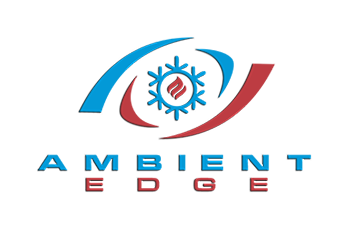
If you’re like most Laughlin, Nevada, homeowners, your utility bill continues to increase as the mercury rises. That means that at the peak of summer, you might be paying much more than you bargained for just to stay cool. This summer, save on your energy bills with these 10 DIY and high-tech methods.
Learn to Program Your Thermostat
Thermostats have come a long way since the heyday of manual devices. Today, programmable thermostats are both affordable and easy to use, as long as you take the time to set them properly. Though most programmable thermostats are relatively user-friendly, our HVAC experts at Ambient Edge are always on hand to assist with device installation and programming.
In the summer, set your thermostat to 76 or 78 degrees while the family is home to enjoy the cool air. When everyone is asleep or away at school and work, dial the temperature back 8 to 10 degrees. Be sure to program the thermostat to return your home to its normal temperature about 30 minutes before you plan to wake up or return home, and you won’t even notice the change in temperature. This simple schedule can lead to substantial energy savings over the course of the summer season without compromising your comfort.
Though not all households need the technology boost that a smart thermostat provides, these Wi-Fi-enabled devices can reward you with even greater energy savings. Smart thermostats have the added benefit of allowing you to connect from virtually anywhere, so you can adjust your home’s settings and save extra energy from the office, the kids’ baseball game, or the beach. Many smart thermostats even have the ability to learn your habits and schedule so they can save even more time and energy.
Turn On Your Ceiling Fans
Once you’ve programmed your thermostat with settings that will keep you comfortable yet save energy at the same time, turn on your ceiling fans for an extra cool breeze. Though fans won’t lower the room temperature, they will create a low-level wind chill effect. This helps you feel cooler without spending much on energy.
Install ceiling fans in bedrooms, living rooms, and other commonly used rooms, taking care to place them as high and position them as centrally as possible for maximum effect. Keep in mind that many ceiling fans can operate in either a clockwise or counterclockwise direction. In the summer, make sure you’ve set your fans to run counterclockwise so they effectively move warm air upwards while generating a cool downward breeze.
Change Your Air Filter
If you’ve never thought twice about your HVAC system’s air filter, it’s time to start. Air filters are designed to capture dirt, dust, and debris before they enter your air conditioner and compromise the system’s performance. Over time, this can have a big impact on both your family’s health and your utility bills.
During a Nevada summer, you’ll typically want to replace your air filter every month to keep your HVAC system running as smoothly as possible. When you replace the filter, pay close attention to the Minimum Efficiency Rating Value (MERV). Though some HVAC systems have unique MERV requirements, we generally advise customers to use filters with a MERV rating of seven or higher to ensure that they capture the majority of airborne contaminants in your home.
Schedule Cooling System Maintenance
If you can’t remember the last time you changed your air filter or gave your HVAC system a tuneup, it’s time to schedule preventive maintenance. At Ambient Edge, our maintenance checklist includes everything from replacing your air filter to checking fluid levels to calibrating your thermostat.
Together, all of these maintenance tasks prevent bigger issues from arising unexpectedly and keep your system operating at maximum efficiency. With a more efficient system, you can say goodbye to unnecessary energy consumption and keep utility bills as low as possible.
Rethink Your Cooking and Cleaning Schedule
Whether you love or hate cooking and cleaning, there’s no denying that these household tasks can have a big impact on energy usage in your home. When summer heat is at its peak, limit heat-generating chores during the day and do them at night or in the early morning instead.
By running the clothes dryer in the early morning or turning on the oven late at night, you’ll give your air conditioner a break while still keeping your home cool. To cut down your energy costs even more, consider line-drying your clothes outdoors instead of relying on the dryer during the summer months.
Keep Your Roof Cool
You’ve probably noticed that you feel much hotter when you wear black or other dark colors outside. You might be surprised to learn that black and dark gray roofs and awnings have the same ability to absorb heat, which can affect the temperature in your home.
If you’re in the market for a new roof, consider a sunlight-reflecting material or one with a light-colored coating. Buildings with light-colored roofs often require as much as 40 percent less energy for cooling, which can translate to a savings of over $100 per year. If a new roof isn’t in the cards, consider adding a protective coating to your existing roof to slash your utility bills.
Cool Your Home From the Outside
In addition to rethinking your roof, reconsider the cooling potential around your home at the same time. Trees and shrubs can add an impressive amount of shade that can cool your roof and limit the amount of sunlight that streams through your windows.
Along the same lines, awnings over your windows can decrease solar heat gain by up to 65 percent in the summer months. With less heat entering your home, your air conditioner won’t have to work as hard, resulting in lower energy bills all summer long.
Seal Your Home
If you live in an older home, chances are it has its fair share of small cracks or leaks. These tiny cracks allow small amounts of warm air to enter your home while letting conditioned air leak out. Over the course of the summer, this can translate to a big energy loss.
Start simple by sealing windows and door frames, and use expanding foam to seal openings around the areas where pipes or cables enter your home. If you can’t easily locate air leaks, consider scheduling a home energy assessment for professional help.
Improve Indoor Air Quality
Both air leaks and airborne contaminants can lead to indoor air quality issues in older and newer homes. Issues ranging from high humidity to indoor pollutants and stale air can all compromise indoor air quality and cause your HVAC system to use more energy than it should.
At Ambient Edge, we specialize in a number of indoor air quality products that can get your home back on track. If your home struggles with high humidity, for instance, a dehumidifier will make your home feel cooler while reducing the burden on your air conditioner. If your indoor air is plagued by chemical vapors, mold problems, or pet dander, a high-quality air purifier can work with your existing HVAC system to clear the air while keeping energy consumption low.
Replace Your Outdated Air Conditioner
Relying on your trusty old air conditioner year after year might seem like a great way to save money, but in practice, this can actually become more expensive over time. Most air conditioners are designed to last for about a decade. Once that 10-year mark has passed, technology becomes outdated and air conditioners often run much less efficiently.
Though a new air conditioner requires an initial investment, many will help you save on energy costs with each cooling cycle. For example, the Lennox XC25 air conditioner relies on Precise Comfort technology to increase or decrease cooling output in amounts as small as 1 percent. That means you can easily fine tune your family’s comfort while reducing your utility bills at the same time.
Whether you’re in the market for a new air conditioner installation or your home needs new indoor air quality equipment, the professionals at Ambient Edge are here to help. Give us a call at (702) 944-8838 to talk energy savings today.
Image provided by Shutterstock



